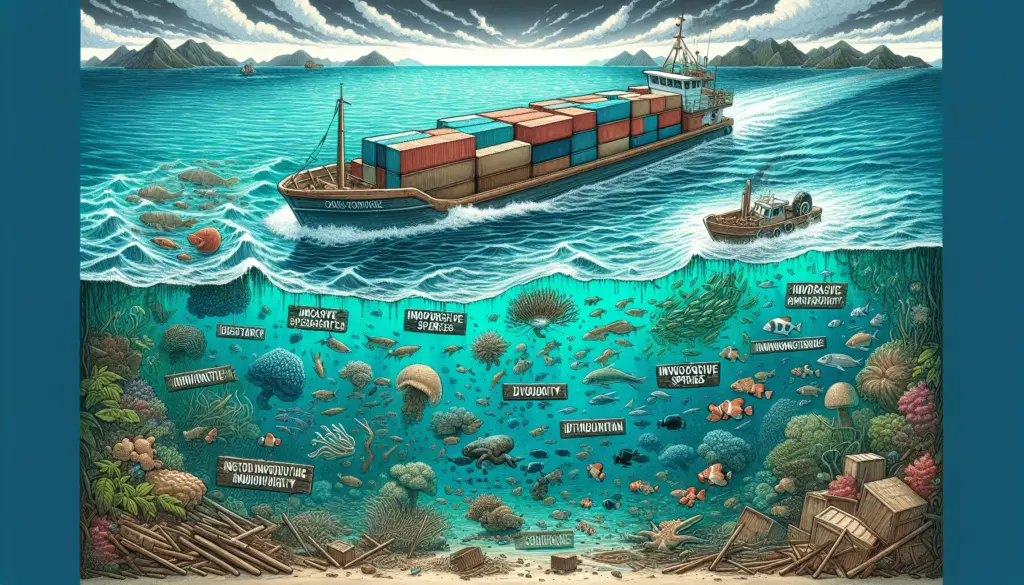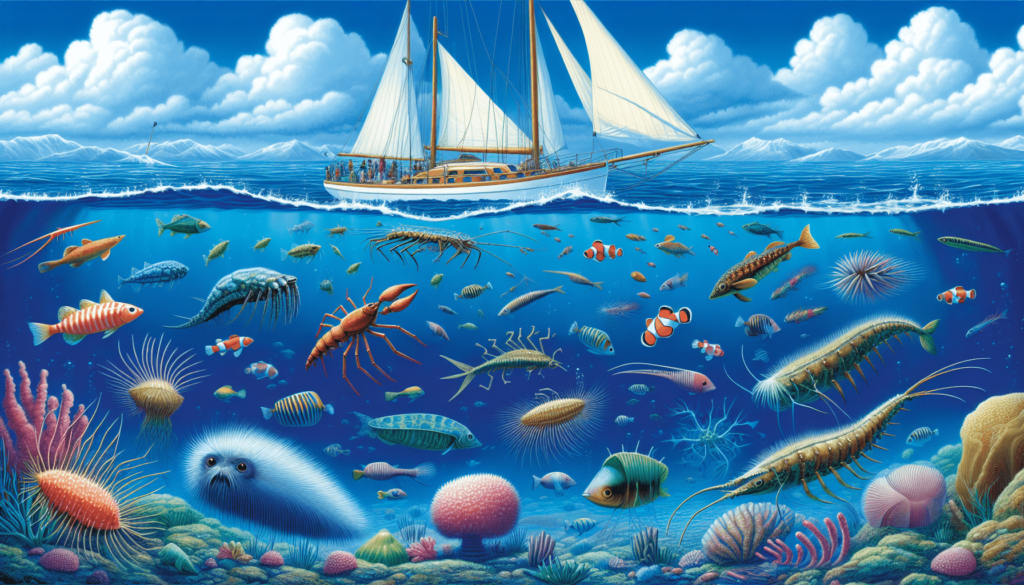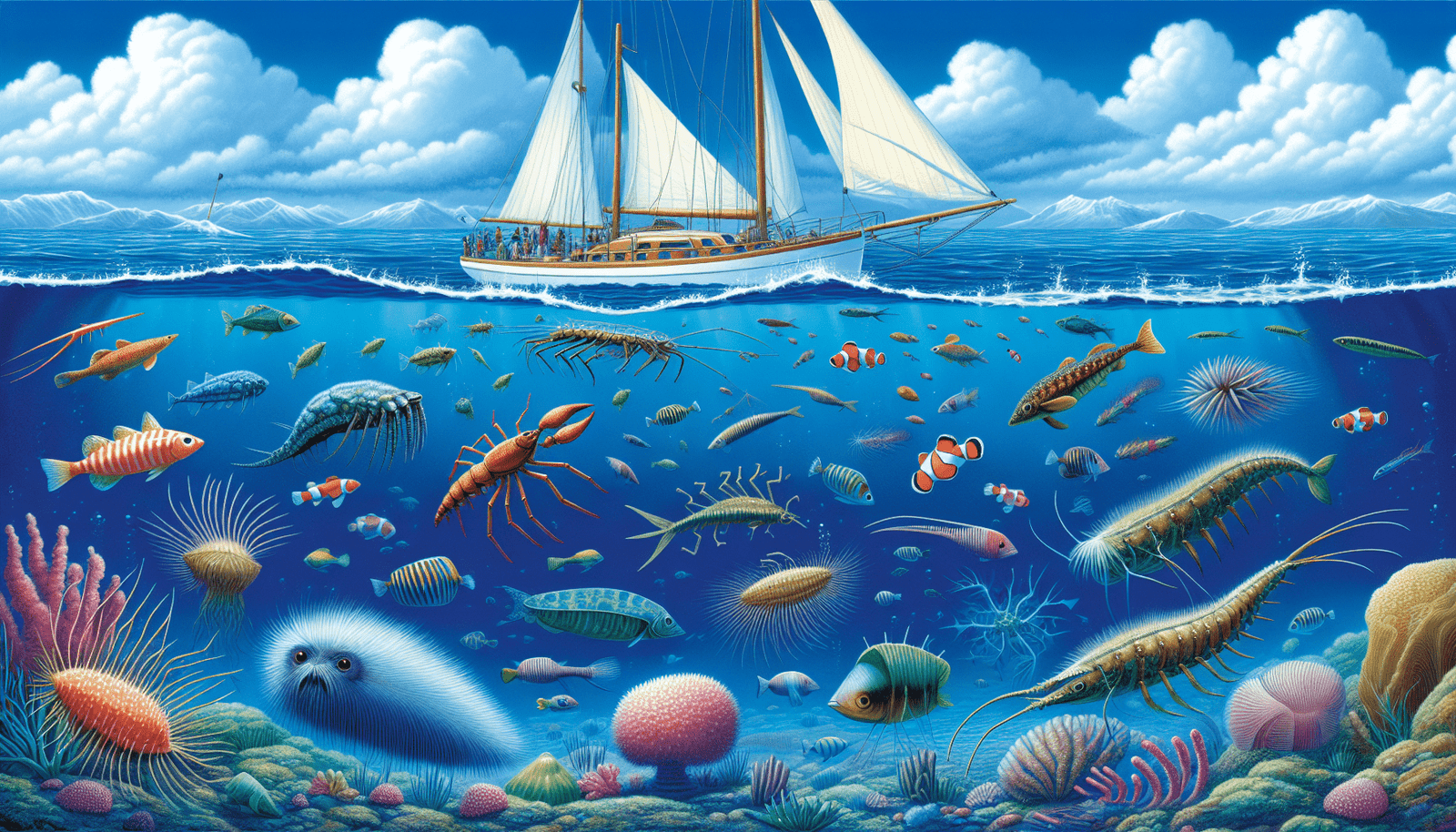You’re about to uncover how seemingly innocent boat trips can have far-reaching impacts on aquatic ecosystems. A sobering reality is that invasive species often come aboard, unbeknownst to boaters, causing devastating changes to water habitats. The heart of this article will shed light on these unintended stowaways, how they spread between different bodies of water, and what dreadful consequences they can bring to the balance of aquatic ecosystems. Brace yourself for a journey of understanding the ripple effects caused by these inconspicuous invaders.
Understanding Invasive Species
Hey, did you ever wonder about those plants or animals that you didn’t recognize in your local pond, lake, or river? Maybe they’re foreign visitors, better known as invasive species. Now, you might ask, “What exactly is an invasive species?” You’re at the right place.
Definition and characteristics of invasive species
An invasive species is an organism – plant, animal, or microbe – that is not native to a particular location and has a tendency to spread, causing damage to the environment, economy, or human health. To qualify as invasive, a species must possess certain characteristics: first, it’s non-native, meaning it comes from a different geographical origin. Second, it upsets the balance of the ecosystem it enters, usually due to rapid reproduction and spread. Last but not least, it causes harm, be it to the environment, economy, or people’s health.
Examples of common invasive species
Frequently, you’ll find zebra mussels, lionfish, or kudzu on the list of infamous invasive species. Why are they a concern? Zebra mussels, for instance, breed rapidly and can clog pipes of water treatment and power plants that draw from the affected water bodies. Lionfish, on the other hand, are predatory fish notorious for wiping out native fish populations in the Atlantic. Kudzu, a plant native to East Asia, can grow a foot per day under ideal conditions and quickly takes over native vegetation. These are just a few examples!
Boats as Vehicles for Invasive Species Dispersal
You might wonder, how do these invasive species travel? Let’s tackle this – one major vessel (pun intended!) of invasive species dispersal is boats.
Mechanisms of invasive species transport via boats
Invasive species travel on boats in a few ways. They can hitch a ride in the ship’s ballast water, which is taken up in one location and discharged in another. They can also attach to the hull, equipment, or even recreational gear carried on the boat. Once the boat reaches a new destination, the invaders disembark and establish in their new home.
Most at-risk bodies of water and regions to boat-related invasive species spread
Highly traveled waters, such as the Great Lakes, the Mediterranean, and areas with busy ports or marinas are particularly at risk. But remember, no water body is off-limits from the risk of invasion.
Identified invasive species commonly spread by boats
Zebra mussels are classic examples of invasive species spread by boats. And they’re not alone, other aquatic plant hitchhikers like Eurasian watermilfoil, or animals like the quagga mussel and sea squirts have found their way to new habitats via boats.

Impact on Aquatic Biodiversity
The biodiversity of our waterways is profoundly affected by the introduction of invasive species.
Shifting species balances and competition for resources
When a new, invasive, species lands in a water body, it often outcompetes native species for resources. It might eat their food, hog their habitat, or even start snacking on the native species themselves!
Impact on endemic species
Endemic species are the species native to a specific place and are often the most threatened by invaders. Invasive species can push these local species towards extinction.
Changes to predation patterns and food webs
Invasive species can cause a domino effect in the aquatic food web. Take a new predator, for example. It can cause an increase in the animals it eats and a decrease in the species that animal would usually consume.
Effects on Water Quality
Invasive species don’t just meddle with whom eats who. They can dramatically change the water’s chemistry and clarity.
Influence of invasive species on water clarity and light penetration
Many aquatic plants and animals can affect light penetration in water bodies, messing with the growth of other species. For example, invasive plants or algae can form thick mats at the water’s surface, blocking light from reaching other organisms.
Changes to water chemistry
Certain invasive species can alter the pH, temperature, and dissolved oxygen levels in water, making it inhospitable for native species.
Impact on nutrient cycling and availability
Some invasive species can disrupt nutrient cycling by altering plant growth or decomposition, leading to either nutrient deficiencies or surplus.

Influence on Aquatic Habitats
Invasive species pose a real threat to aquatic habitats, as they alter the physical structures and community compositions of these ecosystems.
Alterations to physical habitat structures
Some aquatic invasive species – particularly invasive vegetation – can dramatically alter physical habitat structures. These changes can make habitats unsuitable for native flora and fauna and affect ecosystem processes.
Changes in habitat availability and niche spaces
Changes brought by invasive species can often result in changes in available habitats and niche spaces for other species, often to the detriment of native fauna and flora.
Impacts on spawning and nursery areas
Invasive species can threaten native fish populations by displacing them from their spawning and nursery areas, affecting their reproduction and survival rates.
Economic Implications
The impact on the environment is not the only concern. There’s a hefty price tag attached to these invaders.
Costs associated with management and control of invasive species
Preventing the spread of invasive species and managing their impacts can be incredibly costly, involving monitoring, control, and eradication efforts. And once an invasive species has established, long-term management is needed, which adds to the economic burden.
Impact on commercial fishing and aquaculture
Invasive species can negatively affect commercial fishing and aquaculture industries by disturbing the food web, competing with native species, and sometimes preying on commercially valuable species.
Damages to infrastructure and increased maintenance needs
Invasive species like zebra mussels that colonize hard surfaces can cause significant damage to infrastructure, such as water treatment facilities, and lead to increased maintenance and repair costs.
Human Health Risks
Invasive species don’t stop at economic or environmental damages. Sometimes they pose risks to human health too.
Potential for increased risk of waterborne diseases
Certain invasive species can increase the risk of waterborne diseases by creating conditions favorable for disease-causing organisms.
Influence on water aesthetics and recreational safety
Water bodies infested with invasive species can often look unattractive, deterring recreational use. Additionally, thick mats of invasive plants can pose dangers to swimmers or boaters.
Impact on sources of drinking water
Invasions can affect drinking water quality and availability by impacting water treatment processes, causing taste and odor problems, and occasionally adding toxins to the water.
Management and Prevention Strategies
Prevention is always better than a cure. So, what can we do to manage and prevent these invasions?
Best practices for cleaning and maintenance of boats
One of the best ways to prevent the spread of invasive species is to routinely clean and dry boats, trailers, gear, and any other equipment that comes into contact with water.
Policies and regulations in place to prevent spread
Governments around the world have established policies and regulations to limit the accidental import and spread of invasive species, such as controls on ballast water discharge and requirements for boat cleaning and maintenance.
Community education and outreach efforts
Public education and community outreach are crucial in the fight against invasive species. By letting people know about the risks and what they can do to help, we stand a better chance of preventing future invasions.
Case Studies and Research Findings
Looking into past invasions can offer us valuable insights.
Notable incidents of boat-spread invasive species and their outcomes
One of the most notable is the infestation of The Great Lakes by zebra mussels, which caused serious damage to native species and infrastructure, while also posing a threat to human health.
Key research findings on the topic
Research consistently emphasizes the crucial role boats play in spreading invasive aquatic species and the seriousness of economic, environmental, and human health impacts that may follow.
Lessons learned and recommendations from real scenarios
The high cost and limited effectiveness of post-invasion control reaffirm the importance of preventive measures such as regular boat cleaning, adequate policy, and public education.
Future Prospects and Challenges
Despite all efforts, we still face challenges in managing invasive species.
Predicted trends in the spread of invasive species
Increased global trade and climate change are expected to lead to more invasions and even more spread of existing invasive species into new territories.
Emerging threats and challenges
Anticipating which species could become invasive in the future is challenging but crucial to prevent new invasions.
Innovative solutions and research directions
Research into innovative solutions is critical – like novel technologies for early detection and modeling to predict invasion risk, which are emerging as promising tools in our fight against invasive species.
So keep your eyes peeled next time you’re out on the water. You could be the frontline of defense against the next invasive species!

